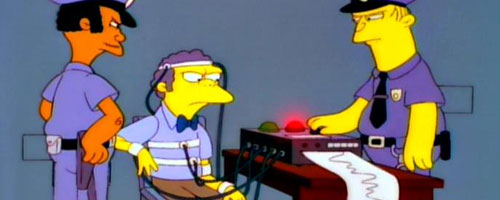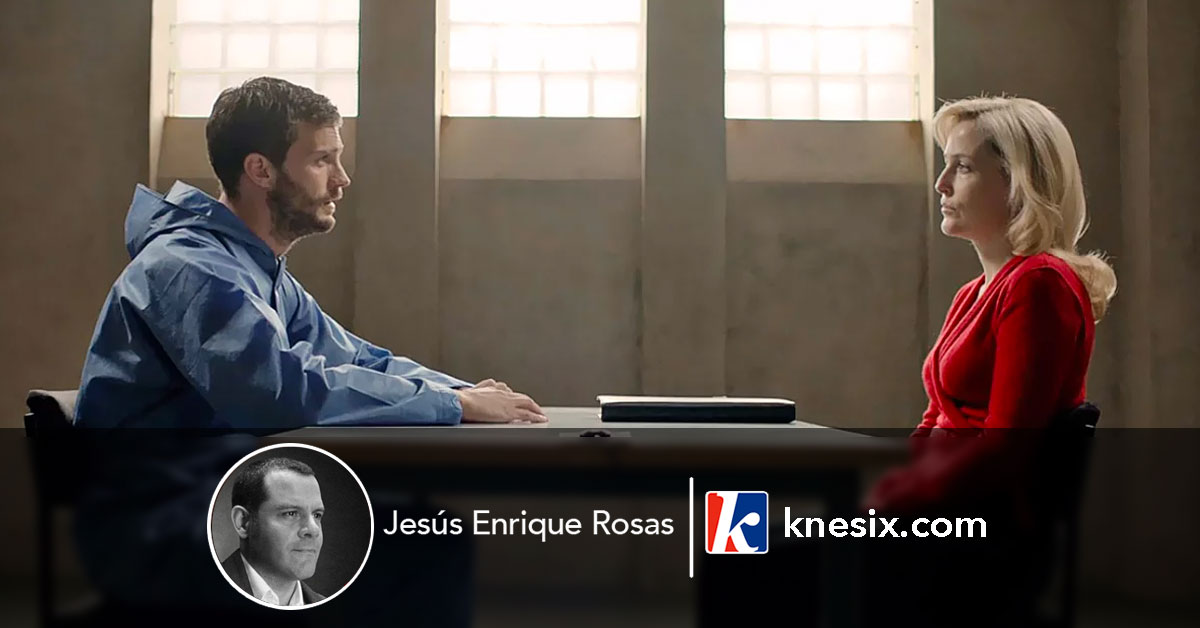No doubt about it: Lie detection is the topic that has generated the most interest in my website since its origins. The process of uncovering falsehoods at a glance has connected me with many people who want to know how to tell fact from fiction.
Unfortunately, this popularity has also generated enough “Lie Detection Gurus”, who claim to have almost psychic powers over human behavior; they claim to detect when someone is lying from mere gestures.
Just by making such a claim, they raise suspicions.
Lie detection ‘sells’, there is no doubt about it.
I remember a live broadcast in Mexico; I was invited by local network for an interview. I had been previously informed that it would revolve around some political figures in Latin America; the preliminary questions seemed logical and most were based on analysis done on the page, so I expected no surprises.
The program was running, and among the examples they inserted a clip of Hugo Chavez; I don’t remember exactly the statement he was making at that moment, but the presenter’s question was categorical: Is he lying or is he telling the truth?
I refrained from sarcastically asking: Do you really need a specialist to tell if Chávez is lying?
It was better to temporarily disconnect my sarcasm while I remembered that I had clarified to the producers that the subject of lie detection is not something that lends itself to live shows. I merely described the facial expressions I appreciated at the time, Chavez’ paralanguage, his choice of words and how everything combined together.
“But then, is he lying or telling the truth?” the presenter insisted.
Apparently my interlocutor had not taken the hint. After an awkward silence and unbiasedly reviewing the clip’s characteristics, we continued with the next example.
And thats’ the first characteristic of actual lie detection:
1. A matter of subtetly

While we have a very practical guide on how to detect lies, these are tips for general guidance… but how does it work, for example, when you have to establish that a defendant, or a witness in a trial, is telling the truth?
We can all practice the ‘individual’ process of lie detection and become more or less skilled; but would you be prepared to assert that a person is lying, knowing that your conclusion could result in such outcomes as immediate dismissal, public scorn or several years in jail?
Such a decision cannot be taken lightly. This guide is to give you an overview of the **true** lie detection process used by certified specialists, so that you can avoid hiring or resorting to someone who claims to have supernatural powers.
2. Factors involved

First and foremost, in order to detect lies you must analyze, separately, four distinct factors of expression:
– Microexpressions, or emotions hidden in the face. These are the most ‘popular’, and although they are very effective in pinpointing contradictions, they are insufficient for more difficult cases.
– Kinesics of the subject, or his general body expression: How is he sitting? Does he gesture a lot with his hands? Does he have any tics? What kind of illustrators and manipulators does he use?
– Paralanguage, or the quality of the voice: Does he raise or lower the volume at certain times? Does he pronounce the words correctly? Does he have an accent?
– The discourse, the verbal part of the statement: What kind of words does he use? Does he stutter? On average, how many words do the sentences have? In what verb tense does he express himself, does he use pronouns, gerunds…?
3. “I can do this myself”

Few concepts are as romantic as the ‘lone wolf’ in cop shows who is called upon when the entire squad has given up. The stereotype is a frustrated retired officer whose behavioral experience would make Dr. House pale in comparison.
I have seen several cases on the Internet, mainly in Mexico and Colombia, of self-proclaimed ‘experts’ working totally alone, which is laughable. This brings us to rule No. 1 of lie detection interrogation:
You need to assemble at least 3 specialists for an interrogation.
This is recognized by both Paul Ekman and Joe Navarro, world authorities on the subject; it’s impossible for spotting a liar at these levels to be a one-person job.
If you already know the factors involved in scientific lie detection, how do you think a single person would be able to conduct the interrogation and be attentive to microexpressions, paralanguage, kinesics and speech? Even if he/she filmed the interview and reviewed the recording many times, it would take too much time.
Besides, we all have biases and may perceive cases according to our internal filter. What if the lone wolf is not being impartial? Who is going to judge him?
The three specialists conducting the lie detection interrogation must have the same level of training and must have absolute trust in each other, because during the process, they will each make their own conclusions and then compare them. The fact that they are an odd number is to avoid ties in the observations.
4. It’s a team job (each one with a critical task)

During the interrogation, the three specialists assume the following roles:
– The interrogator: The one who executes the interrogation. He asks the main questions and paraphrasing questions to make sure he understands what the accused is expressing. This is undoubtedly the most difficult role, as the interrogator must maintain an adequate pace of speech, always calm and emotionally detached from the case. It requires a lot of self-control.
– The analyst: The analyst is the one who accompanies the interrogator during the process; they perform a visual balance and a sense of equilibrium for the accused. Ideally, the interrogator and analyst should be of different sexes.
– The observer: The observer is present during the interrogation but outside the defendant’s field of vision, preferably behind a mirrored window. He serves the function of a ‘second analyst’, and his position allows him to appreciate not only the kinesics of the accused but also those of his companions. This point is very important.
5. Drop the polygraph

I can’t deny that I know very good professionals in the field of polygraphy (detecting lies with a machine), but in my experience, from the first moment you are strapped into one of those devices, your first thought is, “Is it possible that some truth could be recorded as a lie?” In other words, it biases you.
And any predisposition will make the readings jump like rabbits on coals.
Another important detail about polygraphs is that the initial calibration is based on questions that are easy and quick to answer truthfully; as the session progresses, these become more complex and direct with respect to the case being studied, so it is normal for us to become increasingly anxious… and the polygraph records it.
In other words, it may be the interrogation itself, rather than your answers, that makes you nervous.
I am always asked about the series “Lie to me”: How real were the procedures they presented? My answer: From the emotional instability of its protagonist, to eccentricities such as the “cube” of white light in which they locked the suspects, all are factors that cloud the process.
Columbo was a much better interviewer (even if he fits in the ‘lone wolf’ TV trope)
6. There’s no such thing as ‘real time’

I mentioned the example of the live program because it is the easiest way to present an ideal: The possibility of detecting lies just by taking a look at a person. This is impossible, impossible, impossible. There are too many factors at risk to say, in seconds, whether someone is lying or not.
After the face-to-face interrogation process, the three specialists make individual notes; we immediately meet and issue our first considerations, compare what we agree on and what we disagree on, and leave to review the recording separately. The next meeting never happens before 24 hours (The brain needs time to ‘extract’ the finer details in the most difficult cases).
Remember that the ‘observer’ was attentive not only to the kinesics of the respondent, but also to the kinesics of his other two companions? His job is critical as he compares both expressions to make sure that those of us sitting with the accused are not influencing his answers (or being influenced by him, in cases of very charismatic or convincing manipulators).
7. Uncovering the lie is half the job

After several days and a thorough analysis, determining whether the person was lying or not is information that we cannot use directly against the accused; we have to use it to obtain a confession.
For example, if we realize that the person was truthful throughout the entire interrogation and only lied when talking about his location at a certain time and day, then it is time to conduct a second interview asking for the details of that moment.
The interview style in this case is much more relaxed; the attitude of the interrogators must be almost of camaraderie (even more than the first time), to get the subject to relax. It is the only way to contrast his state of tranquility with that of alertness to which he will resort as soon as he is asked about the discordant moment or circumstance.
A difficult and complex job! At least you know how to identify the real professionals.
If you want to start detecting these body language cues, download my free ebook of tips:
Much success!
Jesús Enrique Rosas
The Body Language Guy



